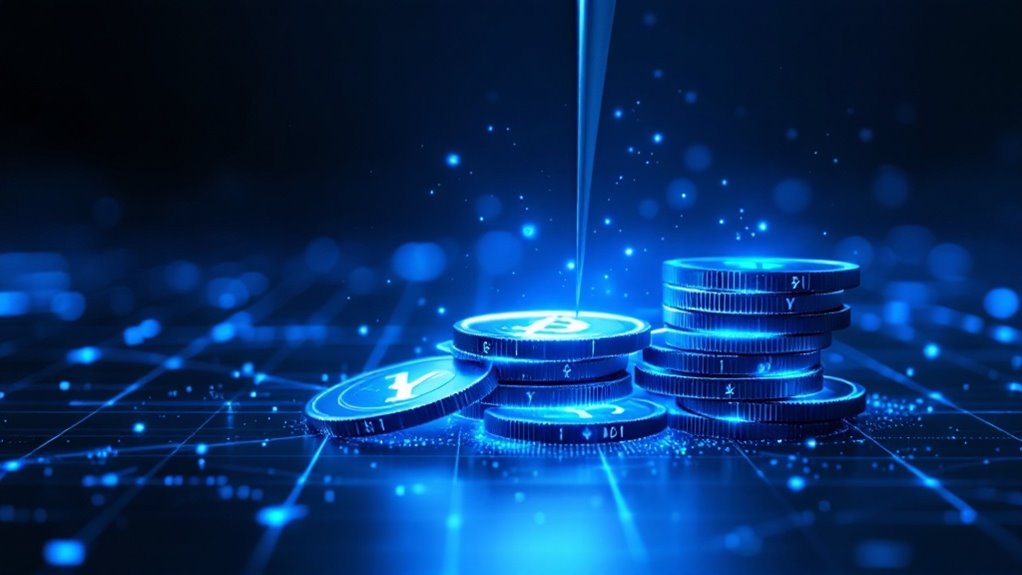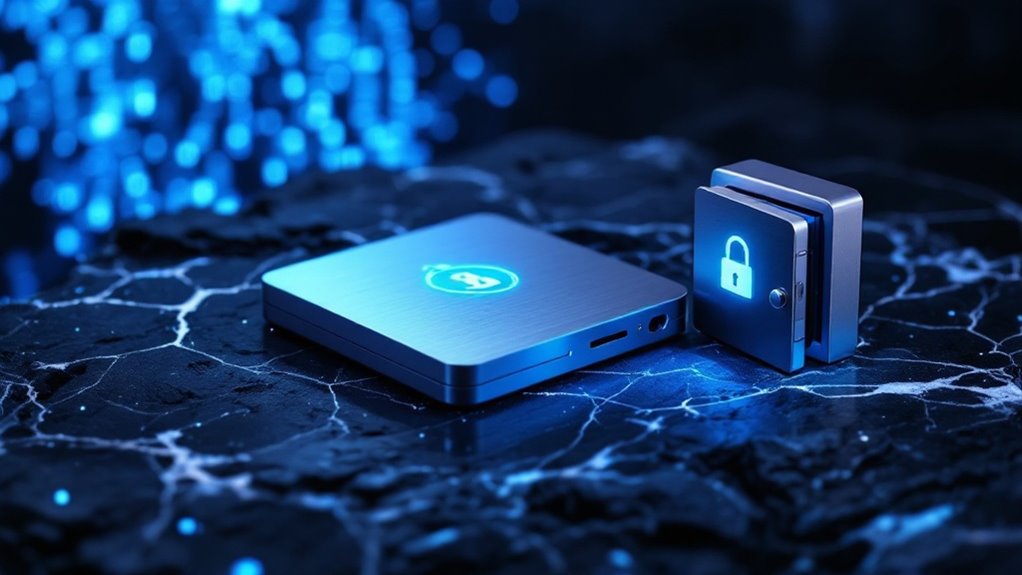Proof of Work acts as the digital bouncer of cryptocurrency networks, where miners compete to solve complex mathematical puzzles for rewards. Like prospectors panning for digital gold, these miners deploy powerful computers to crack cryptographic codes that validate transactions and create new blocks. The system's genius lies in making solutions hard to find but easy to verify, much like a Sudoku puzzle. While energy-intensive, this elegant security mechanism has protected billions in digital assets since Bitcoin's birth, with deeper complexities waiting to be understood.

While digital currencies have revolutionized modern finance, the engine powering their security and reliability remains a fascinating feat of cryptographic engineering called Proof of Work. Like a tireless digital locksmith, this mechanism guarantees that every transaction in the blockchain remains secure and immutable through an intricate dance of mathematical puzzles and computational power.
Born alongside Bitcoin in 2009, Proof of Work emerged from the brilliant mind of Satoshi Nakamoto, building upon Adam Back's Hashcash system. Miners, the modern-day prospectors of the digital age, compete in a relentless race to solve complex cryptographic puzzles. Their powerful machines hum day and night, searching for that elusive mathematical solution that will earn them the right to add the next block to the chain. Popular cryptocurrencies like Litecoin and Dogecoin continue to rely on this system.
The beauty of this system lies in its elegant simplicity: it's incredibly difficult to solve these puzzles, yet remarkably easy to verify the solutions. Miners must find a specific number (called a nonce) that, when combined with transaction data, produces a hash value below a target threshold. It's like trying to find a needle in a digital haystack, except this needle must have exactly the right shape and size. Upon solving the puzzle, miners are rewarded with newly minted cryptocurrency as compensation for their efforts. These sophisticated puzzles serve as the foundation for double-spending prevention, ensuring the integrity of all transactions on the network.
The system's security is impressive, with an estimated $5.5 billion cost to attack the Bitcoin network. Yet, this robustness comes at a price. The endless churning of mining rigs consumes vast amounts of electricity, sparking heated debates about environmental impact. Like a powerful but fuel-hungry engine, Proof of Work's appetite for energy has pushed miners toward renewable sources, though concerns persist.
Despite its limitations, including scalability challenges and slower transaction times, Proof of Work has demonstrated remarkable resilience since its inception. It stands as a demonstration of human ingenuity, creating trust in a trustless environment through pure mathematics and economic incentives.
While newer consensus mechanisms emerge, Proof of Work remains the battle-tested guardian of blockchain security, its flaws and strengths a reflection of the complex trade-offs inherent in decentralized systems.
Frequently Asked Questions
How Much Energy Does Bitcoin Mining Consume Globally Each Year?
Bitcoin mining consumes between 91 and 172 terawatt-hours (TWh) of electricity annually, with recent estimates from the Cambridge Bitcoin Electricity Consumption Index indicating approximately 162 TWh, equivalent to Argentina's national energy consumption.
Can Proof of Work Mining Be Profitable With Renewable Energy Sources?
Cryptocurrency mining can be profitable using renewable energy sources, with solar and wind power often providing lower operational costs than fossil fuels. Many miners strategically locate near renewable sources to maximize profitability.
What Happens to Proof of Work Miners After All Coins Are Mined?
After all bitcoins are mined, miners will rely solely on transaction fees for income. They'll continue processing blocks, with profitability depending on network activity, fee levels, and their operational efficiency with renewable energy sources.
How Do Mining Pools Split Rewards Among Participating Miners?
Mining pools distribute rewards using various payout methods like PPS, PPLNS, and FPPS. Each system calculates miners' contributions through submitted shares and allocates block rewards and transaction fees accordingly based on participation.
What Security Risks Exist in Proof of Work Consensus Mechanisms?
Major security risks include 51% attacks enabling transaction manipulation, centralization of mining power in large pools, network vulnerabilities to Sybil and routing attacks, and selfish mining exploits threatening blockchain integrity.









